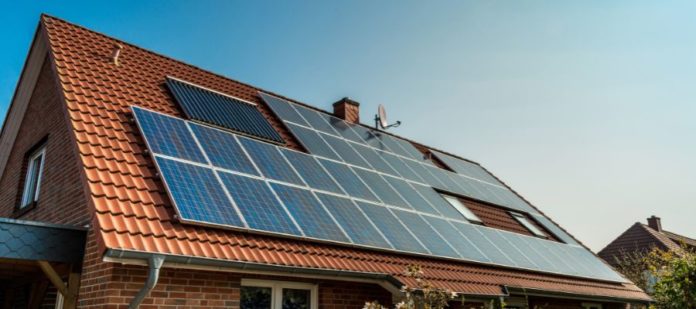Let’s face it, solar panels are a serious investment, and it can be hard to trust contractors whose overall goal is to make money. To get the most out of your investment, you need to know for sure whether your roof and home will benefit from solar panels. So, to help you determine whether you’ll get a suitable return, read on to learn how to tell if your roof is a candidate for solar panels.
What Direction Does Your Roof Face?
While your entire roof doesn’t have to face the same direction, there should be at least one decent-sized portion facing south. Some roofs facing east or west can accommodate solar, but if you want to get the most out of your solar panels, south is the best direction. This is because, in North America, roofs get the most sunlight through southern exposure. East- and west-facing roofs will get sunlight exposure, but not as much as south-facing roofs.
How Angled Is Your Roof?
The tilt of your solar panels matters just as much as where your solar panels are facing, and so does the angle of your roof. Flat roofs can have solar panels but won’t benefit as much until the sun is high in the sky, typically around noon. The ideal roof tilt is about 30°, but depending on your latitude, this may change.
Is Your Roof in Good Condition?
Most roofs can last without replacement for up to twenty years or more. However, if your roof will need to be replaced within the next few years, you’re better off getting it replaced before you consider installing panels. It’s also worth contacting a roofing contractor to inspect your roof for signs of structural damage; solar panels are no lightweight object. Your roof needs to be of solid foundation before any additions are made.
The material of your roof matters as well, as some roof materials are prone to leakage. For example, sealed solar mounts are critical for tile roofs, as improper installment can lead to structural issues. Some tile roofs will also need comp-outs or hooks to be able to hold solar panels safely.
How Much Direct Sunlight Does Your Roof Get?
To get the most out of your solar panels, you want your roof to be able to get as much sun as possible. If your roof is blocked by other structural elements, buildings, or trees, your solar panels may not harness as much light, and you won’t get as much of a return. Additionally, if you live in an area that gets a lot of snow or precipitation, the cloud coverage will dampen the intensity of the UV rays that are absorbed by the solar cells. But if you live in a relatively sunny area without a lot of precipitation and snow, you’ll get much more out of your panels.
Now that you know how to tell if your roof is a candidate for solar panels, you can go out there and take a look for yourself! Just remember to observe how much sun your roof gets throughout the day and pay attention to any trees or structures that may be blocking the light.
























